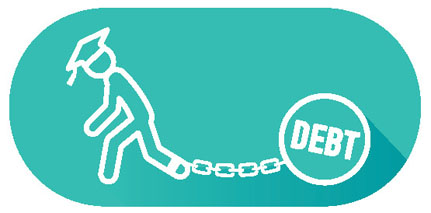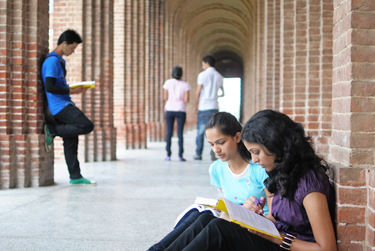Student Debt Among Indian Americans
| The general perception suggests that Indian American parents are wealthy and pay for their children’s education, but things are not always what they seem. By Taniya Talukdar |
|

According to The Institute for College Access and Success (TICAS) Project on Student Debt, two-thirds of students graduating from American colleges and universities are left with some level of debt. The average borrower graduates with $26,600 in the red. Though there is no conclusive evidence, the general perception is that most Indian American parents pay for their children’s higher education because they are comparatively better off. “When we came into the country, we had to struggle quite a bit. We were looking for internships and other means to support ourselves, and we don’t want our children to go through the same struggle,” |
says Kala Padmanabhan, lecturer at San Jose State University who has a daughter pursuing her PhD from Michigan University and a son who aspires to join the Naval Academy. She also adds, “It’s not just about being well-off, it’s also because we Indians here are quite focused on education and want to see our children getting educated that we are willing to pay for their studies.”
Like Kala, most Indian parents think along similar lines. Dr. Sadhan Jana, Professor and Chair at The University of Akron, who has two children pursuing higher studies, says, |

“Indian parents in general avoid subjecting their children to huge amounts of student loans and instead provide funds for their children’s studies. While I have seen most Indian American students receiving financial assistance from their parents for their higher studies, I have also come across cases where they would take loans. The percentage of students taking loans is higher only in cases of pursuing medical or law school, as the tuition is usually high for professional programs.” With no close families and assets to fall back on, it is natural for first generation Indian American parents to be protective of their children, feels Dr Jana. It is perhaps this protective nature that leads many parents to take loans themselves to fund the studies of their children. “Most of the parents of this particular race think it’s one of their parental duties to provide education for their children,” informs Sri Devi Thakkilapati, Sociologist at The Ohio State University. Interestingly, Sri Devi, took a loan on her own to pay for graduate school as she had taken a break to work and didn’t want to ask her parents to pay for her school. |

But a slightly different and refreshing angle is provided by Dr. Debanuj DasGupta, Assistant Professor of Geography & Women’s, Gender and Sexuality Studies at the University of Connecticut. He says, “The assumption that Indian Americans are financially or educationally well off and that families can afford to pay for the studies of their children or that the students get scholarships is not the complete truth. We need to look at the bigger picture that has diverse Indian American families with both parents working, especially in the service industries. In these families, people are struggling to make ends meet and find it expensive to pay for their children’s education and students end up taking loans. In immigrant heavy states like New York, California and Texas, students reportedly end up with $30,000 student loan on an average.” It is not only that, the acknowledged undocumented arrivals who have been here for a while also end up taking high interest private loans simply because they get a temporary student status under Deferred Action for Childhood Arrivals (DACA) and they can’t avail student loans. |
| Though Indian American parents like to pay for their children’s higher students for various reasons, mostly their protective nature, it is not always conducive. Many come from lower socioeconomic backgrounds too and find it difficult to support their children for education which invariably leads the students to apply for loans. And, the ones who don’t accumulate student debt tend to later take on additional debts after higher education, such as buying a home. Some parents even help with this, but on a large scale though young Indian American professionals may not have educational debt, they quickly accumulate other kinds of large debts. | |




























